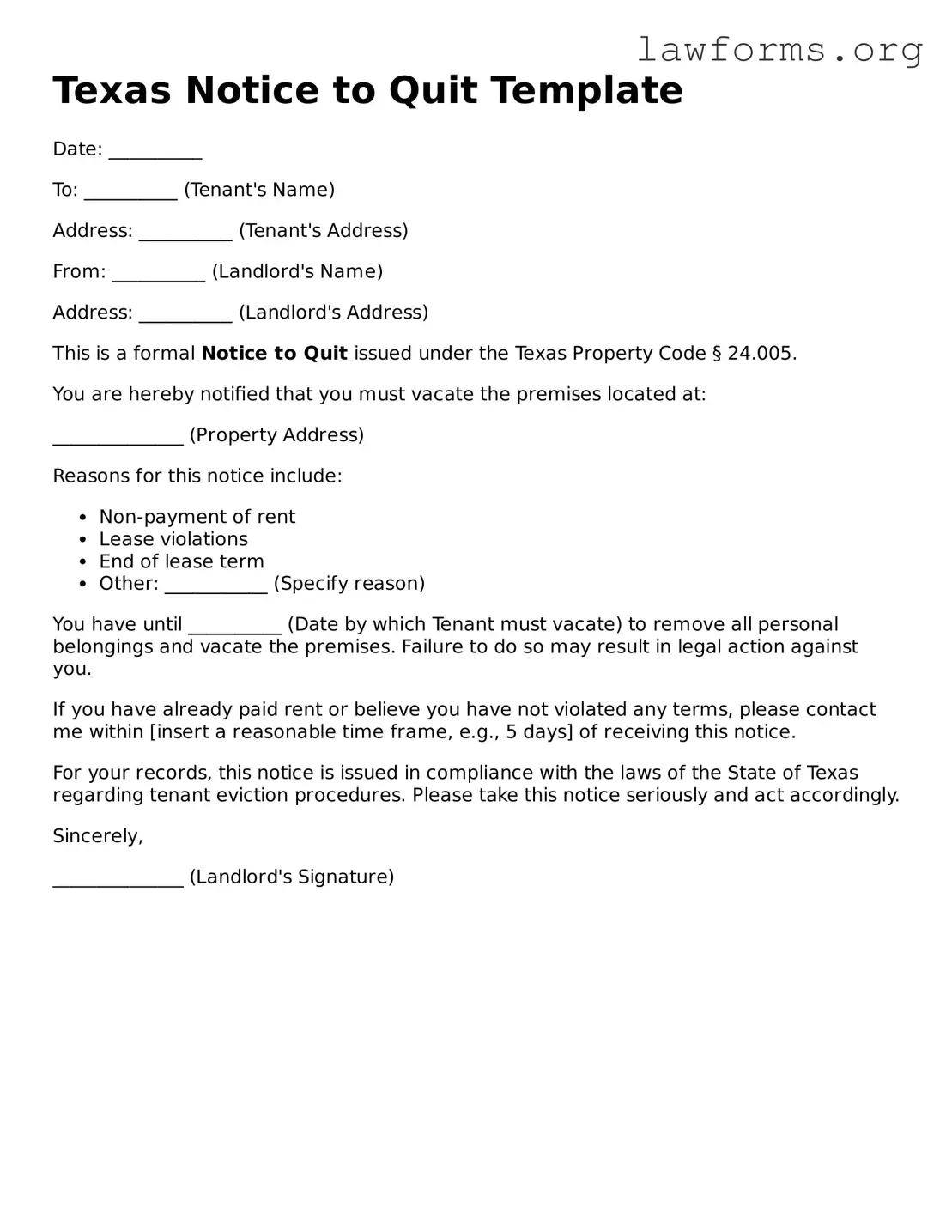Texas Notice to Quit Template
Date: __________
To: __________ (Tenant's Name)
Address: __________ (Tenant's Address)
From: __________ (Landlord's Name)
Address: __________ (Landlord's Address)
This is a formal Notice to Quit issued under the Texas Property Code § 24.005.
You are hereby notified that you must vacate the premises located at:
______________ (Property Address)
Reasons for this notice include:
- Non-payment of rent
- Lease violations
- End of lease term
- Other: ___________ (Specify reason)
You have until __________ (Date by which Tenant must vacate) to remove all personal belongings and vacate the premises. Failure to do so may result in legal action against you.
If you have already paid rent or believe you have not violated any terms, please contact me within [insert a reasonable time frame, e.g., 5 days] of receiving this notice.
For your records, this notice is issued in compliance with the laws of the State of Texas regarding tenant eviction procedures. Please take this notice seriously and act accordingly.
Sincerely,
______________ (Landlord's Signature)
